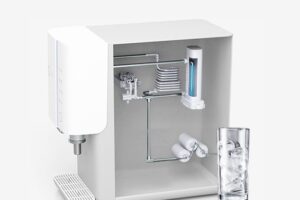
Space being limited helps bring to light solutions which enhance safety and efficiency. For healthcare providers, family caregivers, or even in home care settings, installing a patient hoist can make a world of difference. Particularly in smaller spaces, where maneuverability and storage can be a challenge, a compact patient hoist offers both convenience and peace of mind.
It’s not just about functionality, but about improving the quality of care, but in a limited area. If you’re working with limited square footage, understanding how a vertical storage system for limited spaces can complement a patient hoist will help you create an environment that’s both practical and comfortable.
In this article, we’ll explore how installing a patient hoist in small spaces can significantly improve safety, space utilization, and overall care. From vertical storage solutions to the advantages of compact patient hoists, this guide will walk you through the key benefits.
Why Patient Hoists Matter in Small Spaces?
A patient hoist is a device that allows caregivers to safely transfer patients who have limited mobility. In small spaces, traditional hoists can feel clunky and difficult to maneuver, but modern designs, especially compact patient hoists, are built to fit in tight areas without sacrificing performance. The compact models offer all of the benefits of our larger counterpart but in a much more practical size for confined spaces.
In a private home, at a clinic or a small medical office, using a hoist in the right way will cut the physical strain from caregivers and will make the patient’s experience more dignified.
Key Benefits of Patient Hoists in Small Spaces:
- Improved Patient Safety: The primary function of any patient hoist is to safely lift and transfer individuals with limited mobility. Even more so in small spaces. Narrow hallways and cramped rooms can present risks, but with the right compact patient hoist, these issues are mitigated.
These small hoists are designed so that the hoist moves easily, with access for the patient and caregiver to balance and control themselves. In addition, modern hoists feature safety features, including anti slip surfaces, secure harnessed, and padded slings, which abate the possibility for falls or injuries during transfers.
- Ease of Use in Limited Spaces: Compact patient hoists are specifically engineered to make use of smaller rooms. The usual features of these hoists include easy-to-install wheels, small but powerful motors and lightweight frames for effortless operation in tighter spaces.
There are many models designed to accommodate a 360 degree rotation which makes it very simple for a caregiver to move the hoist around the patient without taking very much room at all. Whether you’re transferring a patient from their bed to a chair or from a wheelchair to a bathtub, the flexibility of a compact patient hoist ensures that you can do so with ease, even in confined areas.
The Role of a Vertical Storage System for Limited Spaces
Storage solutions become as important as the equipment itself when space is limited. A vertical storage system for limited spaces allows you to keep your hoist and other necessary medical equipment neatly tucked away when not in use, freeing up valuable floor space.
The beauty of a vertical storage system lies in its ability to use the height of a room instead of the floor space. In homes or clinics where floor area is scarce, a vertical storage system for limited spaces can be a game changer. Carts of hoists can be stored on racks or even wall mounted and floors are free and tripping hazards are eliminated.
The compact design of the hoist means that you can place it in a corner or against a wall without cluttering the room, while the vertical storage system keeps things organized and accessible when needed.
Advantages of Vertical Storage for Hoists
- Maximizes Available Space: Vertical storage permits you to move more daily activities in instead of taking away from access to essential things. A vertical storage system frees up floor space for other necessary care tasks or creates an open area for easier patient transfers.
- Enhances Accessibility: Stored properly, hoists can be easily found – without harming employees or delaying projects. A vertical storage system can include rails, hooks, or shelves that keep the hoist out of the way yet within arm’s reach when you need it. It guarantees that caregivers can easily and safely take the hoist from the kitchen without having to fiddle around with tangled cords or the lifting of a heavy weight.
Keeps Equipment Clean and Safe: Storing a patient hoist using a vertical storage system not only keeps it organized but also protects it from wear and tear. Cleanliness and hygiene are a big deal in healthcare environments so is this especially important. A hoist that is not stored off the floor is more vulnerable to being exposed to contaminants, dirt and moisture, and doesn’t last as long.
Choosing the Right Compact Patient Hoist and Vertical Storage Solution
Selecting the right compact patient hoist and vertical storage system for limited spaces depends on several factors, including the size of the room, the specific needs of the patient, and the budget. It all depends on finding a hoist that will be flexible and ergonomic in a small space.
Consider the following when making your choice:
- Weight Capacity: Make sure that the weight the patient can comfortably support the hoist.
- Height Range: The transfer possibilities should be accommodated by using the hoist from bed to chair, from chair to toilet, to toilet to chair, or to bed.
- Storage Mechanism: Choose a vertical storage system that is easy to install and allows the hoist to be stowed away safely when not in use.
Conclusion
For those managing caregiving in confined spaces, a compact patient hoist paired with a vertical storage system for limited spaces is a game-changing solution. Practical and efficient, these innovations provide numerous benefits—namely easy maneuverability, reduced patient movement and wasted space.
Investing in these tools helps to care give to ensure safer and more comfortable patient transfers and to reduce physical strain. The vertical storage system keeps equipment neatly organized and easily accessible, preventing clutter and creating a more functional environment.
These options are optimized as solutions for operations, without compromising care quality or dignity, whether it’s in private homes, clinics or small healthcare facilities. A forward-thinking decision to choose the right hoist and storage system adapted to your special needs helps to create a caregiving experience that is beneficial both for patients and providers, and one that delivers lasting benefits for stakeholders alike.



